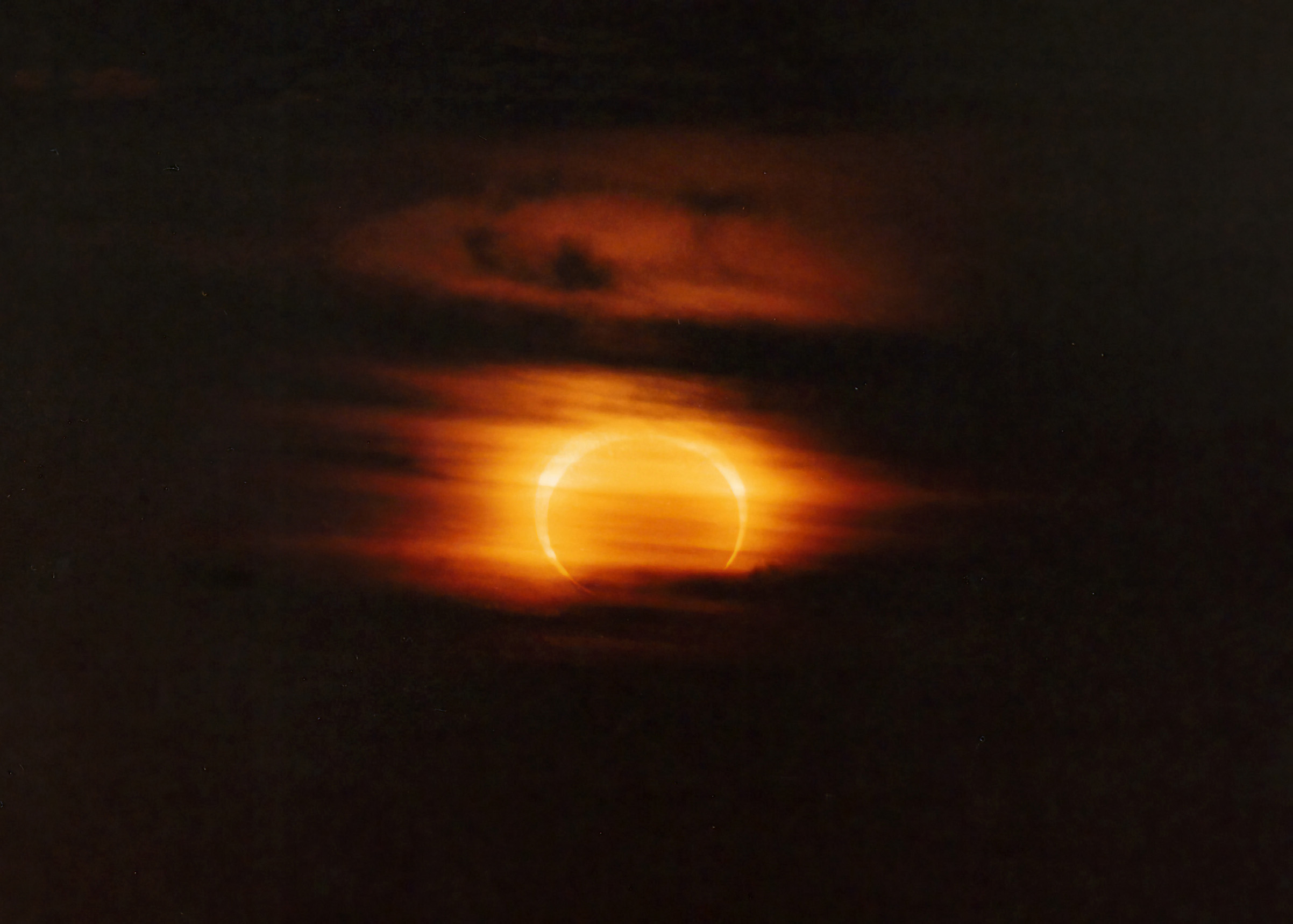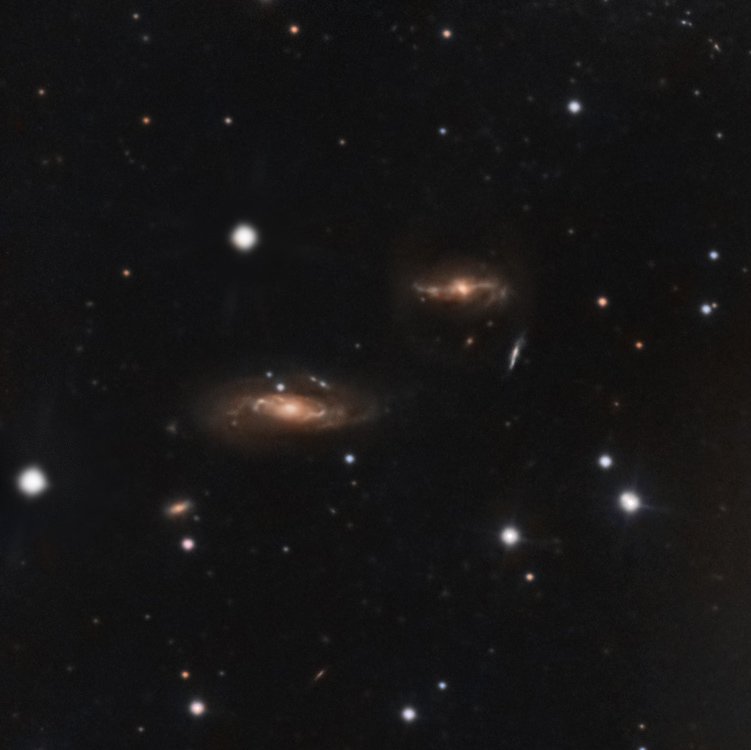Page 1 of 6
Submissions: 2023 January
Posted: Sun Jan 01, 2023 6:32 am
by bystander
__________________________________________________________________________________________________
Please post your images here.
Please see
this thread before posting images; posting images demonstrates your agreement with
the possible uses for your image.
If hotlinking to an image, please ensure it is under 500K.
Hotlinks to images over 500K slow down the thread too much and will be disabled.
Thank you!
_________________________________________________________________________________________________
<- Previous submissions
IC 434
Posted: Sun Jan 01, 2023 8:32 am
by alcarreño
Copyrights: Raul Villaverde Fraile, Domingo Pestana and Nicolas Romo
 IC434_LRGB_2022V2
IC434_LRGB_2022V2 by
Raul Villaverde, en Flickr
Re: Submissions: 2023 January
Posted: Sun Jan 01, 2023 2:44 pm
by joravez
The Rosette Nebula, 2 hours of data on a C14, AP1200 GTO Mount and a Full Frame OSC (ASI2400MC).
Link to full size image
https://ibb.co/7rFhFDW
Re: Submissions: 2023 January
Posted: Sun Jan 01, 2023 3:14 pm
by Sergio
IC 447 REFLECTION NEBULA IN MONOCEROS (THE UNICORN)
C 447 is a beautiful complex of reflection and dark nebula two and a half degrees from the well known Cone Nebula. Contrary to the Emission Nebulas, Reflection Nebulas do not emit radiation of its own. The interstellar dust and gas reflects the light energy from a nearby stars or group of stars. In this case IC 447 reflects the light of massive blue stars which are more hotter than our Sun. On the top right corner it can be seen NGC 2245 which reflects the light coming from SAO 95816 shining at magnitude 7,7.
In 1894 American astronomer Edward E Barnard discovered this nebula and informed to Danish astronomer Johan Ludvig Dreyer (the creator of the NGC catalogue and its IC indexes). One year later in 1895 Barnard thought he discovered something different and reported the same object to Dreyer. As a result this object was duplicated in the IC catalogue (IC 447and IC 2169)
Image taken from La Pampa Argentina
More info at
www.baskies.com.ar
Regards
Sergio
Re: Submissions: 2023 January
Posted: Sun Jan 01, 2023 3:20 pm
by starsoverbucks
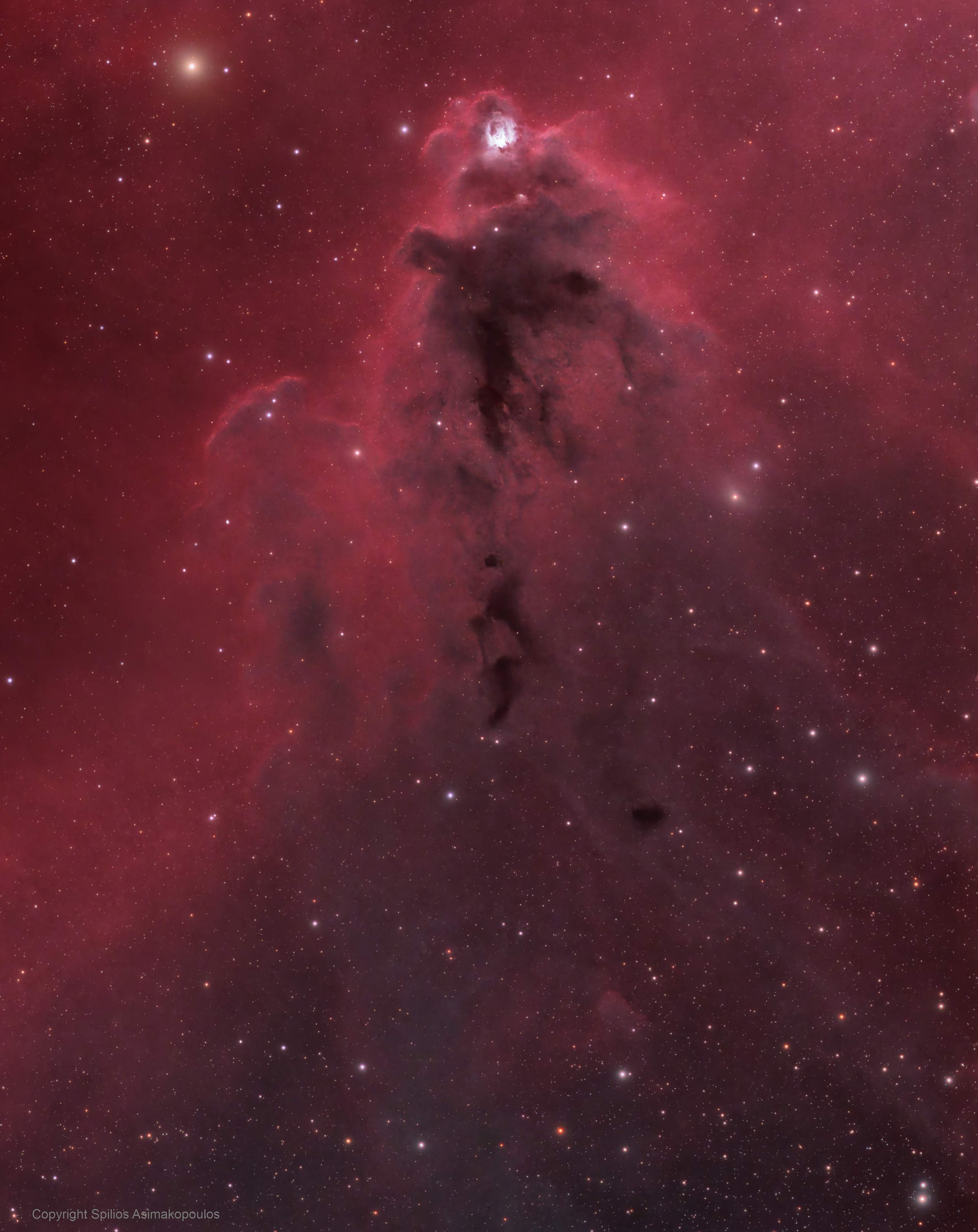 Boogeyman Nebula Compressed
Boogeyman Nebula Compressed by
Spilios Asimakopoulos, on Flickr
LDN1622 Boogeyman Nebula
Technical Details:
Telescope - Esprit 100 ED f/5.5
Camera - ASI2600MM
Mount - iOptron CEM70
Exposure - 12 hours Ha, 6 hours luminance, 30min RGB - 19.5 hours total
Re: Submissions: 2023 January
Posted: Sun Jan 01, 2023 3:22 pm
by Sergio
NGC 1761; 1763 & 1765 EMISSION NEBULA AND OPEN CLUSTER IN THE LARGE MAGELLANIC CLOUD
The image gathers three interesting deep sky objects not commonly photographed
The open cluster in the centre is NGC 1761 which is embedded with emission nebulas. At the top of the open cluster with 4 to 5 arc minutes we have NGC 1763 (also known as N11 B, LH 10 or ESO 85-EN20). The nebula is very bright and it has an irregular shape. To the right we have NGC 1765 another emission nebula with a smaller apparent diameter.
To the upper left of NGC 1765 we have Globular Cluster NGC 1776 of a bit more than 1 arc minute in diameter.
NGC 1763 and 1765 are part of a large region of stars called LMC-N11 (N11) which was discovered with a 23-cm telescope by Scottish astronomer James Dunlop in 1826 and was also observed by English mathematician John Herschel in 1834.
More info at
www.baskies.com.ar
Regards
Sergio
Re: Submissions: 2023 January
Posted: Sun Jan 01, 2023 6:01 pm
by behyar
January 4th 1992 Annular solar eclipse
Shot from the coast of Southern California
Copyright: Behyar Bakhshandeh, Carlsbad, CA
http://www.deepskyobjects.com/
Re: Submissions: 2023 January
Posted: Sun Jan 01, 2023 8:33 pm
by firas
Soul Nebula
This image consists of 17hours and 15 minutes of exposure.
LRGB 220x180
Ha 24x900
Re: Submissions: 2023 January
Posted: Sun Jan 01, 2023 10:33 pm
by felopaul
NGC 7293
HSORGB :
full size/info :
http://www.cielaustral.com/galerie/photo143.html
140 Hrs total frames
done with CDK 610, Moravian C4-16000 on PW L600 mount near Actacama Desert in Chile, El Sauce Observatory
http://www.cielaustral.com
Copyright: Team CielAustral with J.C CANONNE, M. SELBY, G.CHASSAIGNE, N.OUTTERS, P. BERNHARD, D. CHAPLAIN & L. BOURGON
Re: Submissions: 2023 January
Posted: Mon Jan 02, 2023 12:11 am
by AaronW
Lions and Wolf-Rayets and Clusters, oh my!
https://cdn.astrobin.com/thumbs/AEkia8Z ... ouY30K.jpg
The Sh2-132 complex - also known as the Lion Nebula - lies near the border of the Cepheus and Lacerta constellations and contains a veritable zoo of deep sky objects, including two Wolf-Rayet stars, a planetary nebula, at least four open clusters and, of course, the King of this space jungle: the large but faint emission nebula presenting in the shape of a cosmic lion.
I decided to devote substantial time (almost 70 hours) to this target to bring out as much detail as possible in the rich center, as well as the outer nebulosity at the edges of the frame.
The O3 is quite strong and the S2 around the edges of many gas clouds offers nice details, especially near the "back" of the lion's head. With such a zoo of activity in this FOV (including a very dense star field), I tried to bring out a wider range of colors (I think covering the entire visible spectrum) in a way that still looks natural to my eye.
The image comprises 66.5 hours of integration (roughly equal parts of H-alpha, S2, and O3), and was taken from my backyard in Santa Monica, CA under Bortle 7 skies. Processing was done entirely in PixInsight, and the gear used was as follows:
Camera: ZWO ASI6200MM-pro
Scope: William Optics Fluorostar 132mm Refractor
Mount: Astro-Physics Mach2GTO
Filters: Chroma 3nm Ha/S2/O3 50mm
Guide Camera: ZWO ASI174MM-mini
Accessories: ZWO OAG-L, Pegasus Powerbox Advance
Additional detail is available at the image link referenced above.
Respectfully submitted,
Aaron Wilhelm
Re: Submissions: 2023 January
Posted: Mon Jan 02, 2023 7:03 am
by Wah!
20230101 Visible vs Thermal Moon
There are 2 interesting facts from the images:
1. The lunar maria in optical light are darker areas, however, they absorb more visible light, so they get warmer and emit more LWIR light in the thermal image which looks brighter.
2. At the terminator line, both visible light and LWIR light are similar because being lit or not dominates both the reflection and the temperature of the surface.
Re: Submissions: 2023 January
Posted: Mon Jan 02, 2023 7:09 am
by astrocreation
24 Hours of Exposure Time on Andromeda Galaxy (Messier 31) by George Konkov (AstroCreation |
www.youtube.com/astrocreation)

Link to full size image:
https://www.astrobin.com/full/mu9cik/0/?mod=&real=
Re: Submissions: 2023 January
Posted: Tue Jan 03, 2023 1:27 am
by Sergio
NGC 2506 IN MONOCEROS (THE UNICORN)
NGC 2506 (aka Melotte 80, Collinder 170 or Caldwell 54) is a quite populated and concentrated open cluster in Monoceros. 94 probable members have been identified within the field of NGC 2506 based upon their radial velocities. Compared to the Sun, the cluster is moderately metal-poor. This is an old star cluster with a calculated age of more than 2 billion years old. It has a number of red stars and Red Giant Branch (RGB) stars, but it also has a number of member stars that appear to be younger spectral types despite its estimated age.
Best regards
Sergio
www.baskies.com.ar
Re: Submissions: 2023 January
Posted: Tue Jan 03, 2023 1:33 am
by Sergio
R LEPORIS (aka HIND'S CRIMSON STAR)
R Leporis (R-Lep) is a carbon star which are typically an asymptotic giant branch star, a luminous red giant, whose atmosphere holds more carbon than oxygen. R Leporis is too far from earth for its parallax to be measured effectively. It was estimated a distance of 1,350 light-years, shining with a luminosity of approximately 6,689 times our Sun and has a surface temperature of 2,980 K
R Leporis has often been reported as an intense smoky red color, although this is not pronounced when the star is near its maximum brightness. It is reddest when it is dimmest, which occurs every 14.5 months. During these periods it is a candidate for the most-visible reddest star, but this claim is questionable.
By comparing with the other stars in the image, I presume that R-Leporis is transiting (December 2022) its low brightness stage showing probably a magnitude between 8 or 9 (v)
It was named after famous British astronomer John Russell Hind, who observed it in 1845.The star's discoverer reported that it appeared "like a drop of blood on a black field."
Best Regards
Sergio
www.baskies.com.ar
Re: Submissions: 2023 January
Posted: Tue Jan 03, 2023 1:49 am
by martinkonrat

IC447, Reflection Nebula in Monoceros. RGB + Duo narrowband OSC.
Starless version of the rgb and the narrowband flows were blended then rgb stars were put back.
This is the last processing of 2022.
Here in Brazil we are about 1h from the new year. 2022 was a very important year in astrophotography for me, with the help of some friends and a lot of studying my pictures started to look much better.
A very nice and kind 2023 to everybody with lots of clear skies!
🗓 December, 28th to 30th. 2022

Giruá, RS, Brazil. Bortle 4.

FotonAstro Astropipe 200MM F4 Newtonian Astrograph / AM5 Eq Mount

asi2600mc camera
🕶 No Filter / Antlia ALP-T duo narrowband
- 113 x 180s (5,65h) No Filter (built in uv/ir asi2600mc)
- 32 x 300s (2,66h) with antlia duo narrowband filter

pixinsight, photoshop
Re: Submissions: 2023 January
Posted: Tue Jan 03, 2023 6:42 am
by astronomonogdl
Norteamérica Nebula / pelican HOO Modified
20x300 Ha
20x300 OIII
main scope: canon 500 f4,5L
CGEpro Mount
ZWOASI6200 MM-pro
ZWO ef adapter
ZWO 120MM-S guide
ZWO ASI AIR PRO
20 darks 20 flats 20 bias
APP Pixinsight
taken Jalisco México 2022
Author Emmanuel Astrono-mono
Link to hi resolution image:
https://www.flickr.com/photos/136700672 ... ed-public/
https://www.flickr.com/photos/136700672 ... ed-public/
Re: Submissions: 2023 January
Posted: Tue Jan 03, 2023 7:15 am
by Herbert_Walter
As a friend of open star clusters, you have to capture NGC 457 in the constellation Cassiopeia.
It is the brightest open star cluster in Cassiopeia and one of the most beautiful objects of its kind in the northern sky. With a brightness of +6.4, it is barely visible to the naked eye, but easy to see with binoculars and a beautiful sight with a telescope.
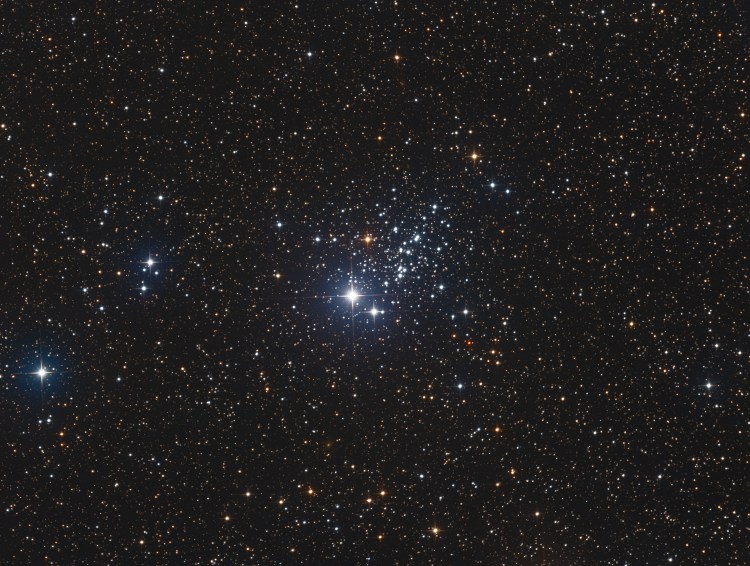
More infos:
https://www.skypixels.at/ngc457_info.html
Re: Submissions: 2023 January
Posted: Tue Jan 03, 2023 11:15 am
by Roi Levi
image name - Comet View
processing and copy rights - Roi Levi
The comet is back to night skies
image story :
the Comet Leonard C / 2021 A1:
was a long period comet that was discovered by G. J. Leonard at the Mount Lemmon Observatory on 3 January 2021 when the comet was 5 AU from the Sun
was imaged in RGB image from December 27th, with the 8 "/ f3 Veloce FL 600mm and the QHY600, exposure time 120 sec per RGB channel Processing Copy Rights Roi Levi @ skygem
https://deepspaceworkshops.com/
https://www.instagram.com/astroi_levi/
Re: Submissions: 2023 January
Posted: Tue Jan 03, 2023 1:55 pm
by Wah!
I captured another set of thermal images the next day and the stitching result seems even better. I hope you like them.
Re: Submissions: 2023 January
Posted: Tue Jan 03, 2023 10:54 pm
by tonymacc
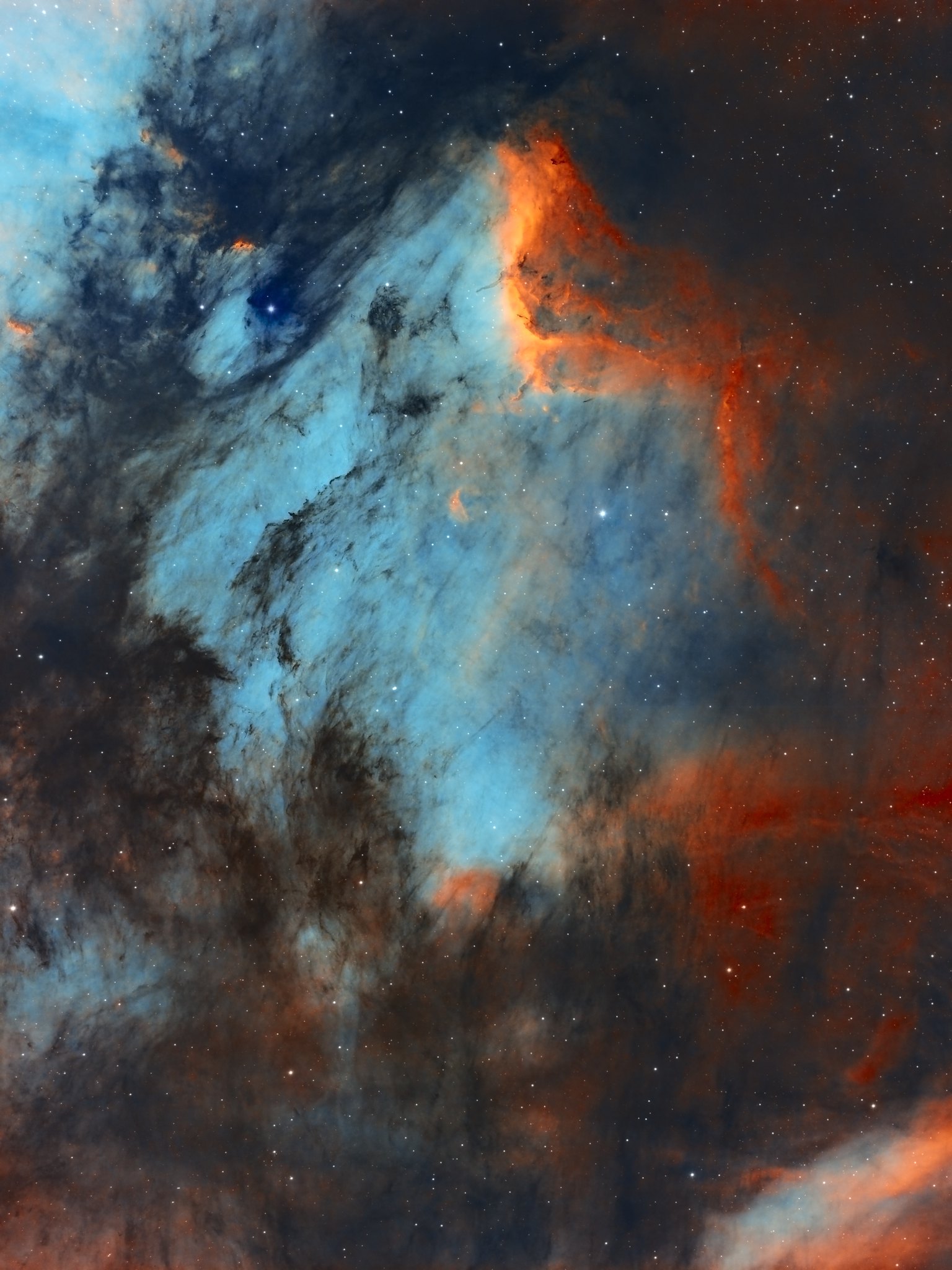 IC5070 The Pelican Nebula in SHO.
IC5070 The Pelican Nebula in SHO. by
Anthony McAvoy, on Flickr
Astrodon 3nm Ha: 15x1200" (5h)
Astrodon OIII 5nm: 13x1200" (4h 20')
Astrodon SII 5nm: 10x1200" (3h 20')
Total Integration Time:12h 40'
Gear used-
Camera - QSI583WSG
Telescope - William Optics GT81
Guidecam - Starlight Express Lodestar
Mount - HEQ5PRO
Captured using SGPro
Processed in Pixinsight
Re: Submissions: 2023 January
Posted: Wed Jan 04, 2023 1:40 am
by JonahRolfness
The Running Man Nebula - 5h RGB
Dreyer's Nebula - 7h RGB
Full sizes available from:
https://www.flickr.com/photos/190058450@N06/
Both of these images were taken out at Alamo Lake State Park, AZ, which is a nice Bortle 2 site located in the Arizona desert. I shot the pictures over the course of 12/23/2022 to 12/27/2022 (including Christmas night!), using a 12in Newtonian paired with a QHY268M and Antlia RGB filters. A CEM70N Mount was used to support the telescope along with a Berlebach Planet tripod. Both images were processed with PixInsight. I'm quite happy with how both of these images turned out - these are the first broadband images I've been able to take with my new large Newtonian, and I'm very excited to share them with you all.
Re: Submissions: 2023 January
Posted: Wed Jan 04, 2023 1:23 pm
by Ayiomamitis
Sol at Perihelion (2023)
http://www.perseus.gr
Copyright: Anthony Ayiomamitis
Rich solar active regions on Sol during perihelion and Earth's closest distance from the Sun at 147.1 million km.
Further details at
http://www.perseus.gr/Astro-Solar-Sunspots-20230104.htm .
Re: Submissions: 2023 January
Posted: Wed Jan 04, 2023 2:04 pm
by Wah!
Three days of heat change on the Moon
Click to view the animation.
Re: Submissions: 2023 January
Posted: Wed Jan 04, 2023 4:25 pm
by litobrit
Hello,
A new process of a 2018 image. I have used new AI deconvolution process.
ASA RC40 of Chilescope, acquisitions with Jean-Baptiste Auroux.
3 hours of LRGB and Ha.
The full frame is here:
https://cdn.astrobin.com/thumbs/5PRSVNn ... ouY30K.jpg
My images on:
https://www.astrobin.com/users/litobrit/
Re: Submissions: 2023 January
Posted: Wed Jan 04, 2023 9:33 pm
by astrohokie
New Years Day 2023 24 Hour Solar Progression
https://www.flickr.com/photos/194543639@N07/
https://www.instagram.com/mark_hoffman_photography/
Copyright: Mark Hoffman

by
mark h, on Flickr

by
mark h, on Flickr
Active Regions 3180 3176 3179 3181 3177 (left to right, top to bottom)
Hydrogen Alpha bandpass
EQ6R-PRO
Explore Scientific ED102
Quark Chromosphere
ASI 174MM
ASI EAF
2" Baader H-Alpha 35nm filter
Pegasus Pocket Powerbox
2" GSO 0.5x reducer
30 panel mosaic (~50% overlap) captured using Sharpcap. 1,000 frames per in 16bit. Stacked in AutoStakkert 3, kept best 5%. Deconvolution and sharpening in IMPPG as well as inversion. Colored in Photoshop using levels additional processing with curves, contrast, shadows, and highlights.




